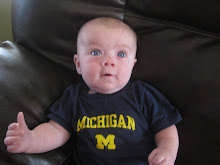Consumer Watchdog in Santa Monica, Calif., and the Public Patent Foundation in New York City argued that Thomson's work should not qualify for patents and that patent enforcement has hindered U.S. stem cell research.
The patent office ruled against the groups in 2008 but last week agreed with their argument that Thomson's work should not have received a patent because other scientists could have done the same that if they had his funding and access to human embryos.
CNN has an article on Emory University research using stem cells from an aborted child in an attempt to treat ALS (also known as Lou Gehrig's disease). To CNN's and reporter's credit, the article specifically mentions where the cells come from.
The stem cells used in the surgery are shipped overnight from Maryland, where Neuralstem, the company funding the trial, is based. The stem cells' source is donated tissue from the spinal cord of an 8-week old aborted fetus, which was donated to the company.Also interesting:
Lead researcher Dr. Eva Feldman, a neurologist at the University of Michigan, designed the trial just four years ago. After a lot of animal testing, her team determined that using fetal nerve stems rather than human embryonic or adult stem cells (such as bone marrow stem cells) was most effective, she says.....
Scientists at the University of Georgia created induced pluripotent stem cells from pigs.
According to Dr. Steve Stice, director of the University of Georgia Regenerative Bioscience Center, his team took a bone marrow cell from a pig and injected six new genes, which caused it turn into an embryo-like cell. Pluripotent stem cells were harvested from this embryo-like cell and injected in another pig embryo.
The first piglets carrying these new stem cells were born September 3, 2009.
So far human embryonic stem cell research has not actually found its way into the human body. Most of the research is still in mice. But mice aren't the best animal models to get more accurate data on how a treatment may affect a person. For example, mice hearts beat four times faster than a human heart and mice don't get atherosclerosis (clogged arteries) – but pigs do. That's why pigs are much better animal models says Stice. "Physiologically, pigs are much closer to a human," he says.






The fetus is developed enough to have a spinal cord to cannibalize, but undeveloped enough to dismiss as "a glob of cells" and abort it.
ReplyDeleteHi JJ!
ReplyDeleteI apologize to writing to you this way through a comment. I've looked all over your site and can't find an email address. I thought you might find this blog post by "The Advice Goddess" interesting: http://www.advicegoddess.com/archives/2010/05/05/the_letter_writ.html
She's posting a letter from a father who is obviously looking for an excuse to divorce his wife. He claims she has gone "baby crazy" ever since she had a "miscarriage" 8 months ago. (sound suspicious? Read on.)
Later he admits that (you guessed it) it was an abortion. I'm sure it's understandable that he would want to keep that matter private, and a "miscarriage" is a more polite term in general society.
The thing is, only one side of the story here is being told, and the advice being given to him is this: She's a lunatic, run fast as you can to a divorce lawyer.
Thanks Jewels.
ReplyDelete